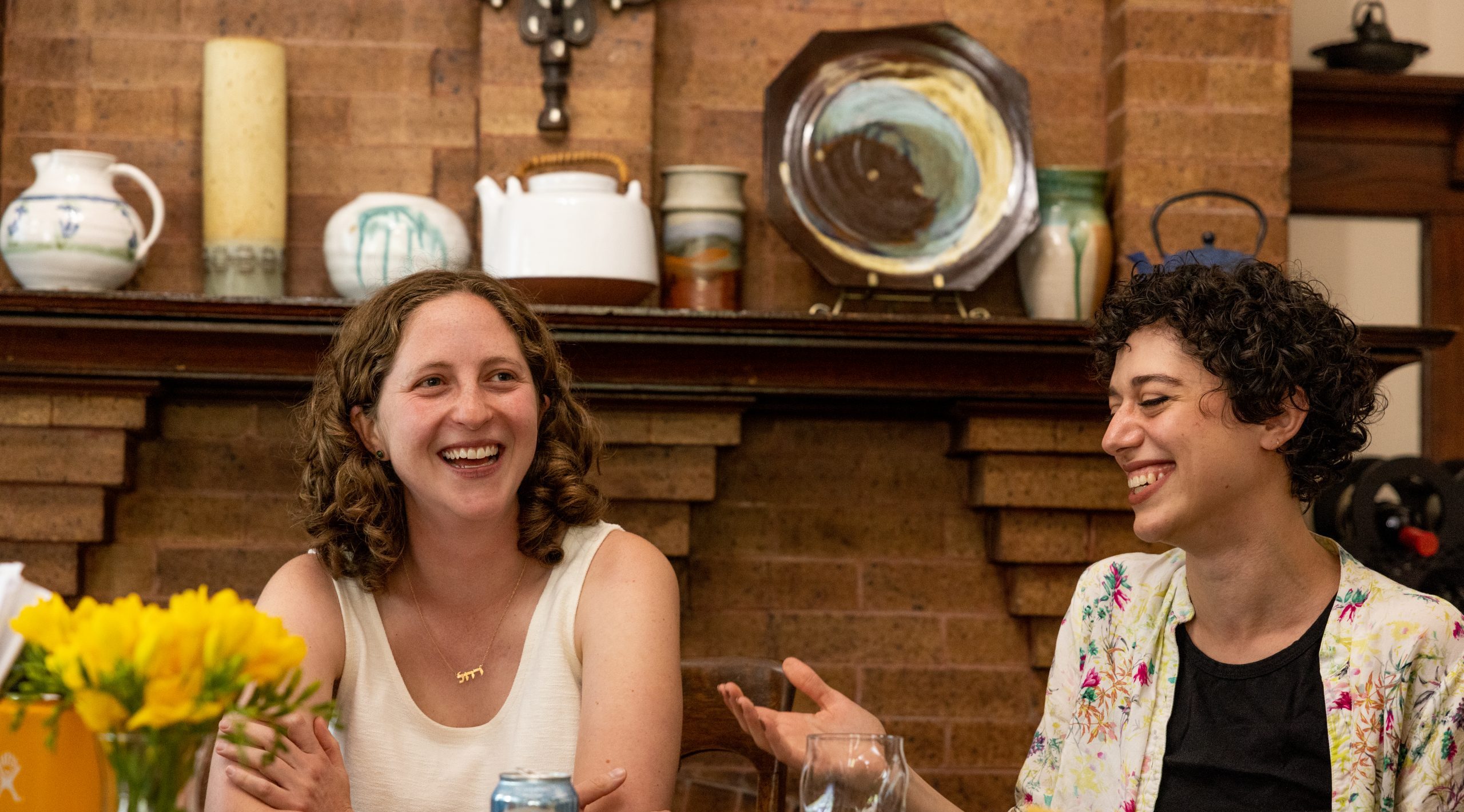
The last couple of weeks have been one of those moments when I pinch myself and ask, “Really, I get paid to do this?!” Because over the last two weeks, I have spent a total of eight days on IJS retreats–first for our Sustainers Circle and, this week, for our staff, both of which are extraordinary groups of people. My days have been filled with reflection, thoughtful conversation, study, and a lot of laughter–all things that I dreamed 25 years ago would describe the work I would do as a rabbi. It’s an extraordinary blessing and privilege.
We held both of these retreats at Trinity Retreat Center, a beautiful place on the Housatonic River in northwest Connecticut. IJS has a long history with Trinity–it’s among the retreat centers we regularly go to. The staff is extraordinarily welcoming. They eagerly accommodate our requests about kashrut and Shabbat. On a retreat last October for our Kol Dodi program, the Episcopal priest at the center, Rev. Dr. Mark Bozzuti-Jones, welcomed our group and spoke movingly about how important it was for him to welcome us because of the pain he knew our people were in after the massacre of October 7. There were tears.
During our staff retreat this week, my colleague Rabbi Myriam Klotz led a session on sacred listening, an area we’re really developing at IJS. The essence of sacred listening is practicing a form of mindfulness that’s relational: sitting with another person with presence and intention, giving them your full attention, being aware of what arises within you as you listen and making the mindful choice to continue listening non-judgmentally. In the session Myriam led, we each sat with a partner for three minutes and listened to them speak. At the end of those three minutes, we summarized–without editorializing–what they said. For the listener, it’s hard work to listen in that way without forming judgments or thinking about what to say. For the speaker, it’s usually a gift to feel heard and acknowledged. (Important side note: I’ll actually be teaching an online course on sacred listening with Myriam and Rebecca Schisler beginning June 23. You can register here.)
The speaking prompt in this exercise was Ayeka, Where are you?, in a spiritual sense. When it was my turn, what I found arising for me were questions about at-homeness. I noticed the feeling I experienced of being at Trinity: an exceptionally welcome guest–but also not at home in quite the same way I do on retreats at Jewish retreat centers. I perceived sensations having to do with translating our language and practices–acts which I find both exciting and also, in some cases, a little tiring. I observed how subtle these sensations could be: not categorical statements, but little movements in my mind, heart, and body. And I found those sensations pinging deeper registers of at-homeness and guestness in my life, most significantly in relation to Israel and America, the tonic and dominant chords of this key in my life.
“When you enter the land,” God tells the Israelites at the beginning of parashat Behar, “the land shall observe a Shabbat to YHVH.” From there the Torah elaborates the practice of the Sabbatical year, the paradigmatic case of a mitzvah that is observed only in the land of Israel. While the agricultural and economic practices associated with the Sabbatical year have deep spiritual meaning, and have even been adopted voluntarily by some Diaspora Jewish farmers in recent years, in halakhic or Jewish legal terms, they do not apply outside the Holy Land.
It’s one of the phenomenal features of Jewish life: We have significant practices that, for the centuries and millennia of our Diaspora experience, a majority of Jews experienced only in their imaginations, not their bodies. And it’s one of the amazing features of the Jewish people’s mass return to the land of Israel in recent centuries: the widespread reclamation and renewal of these ancient practices, not only in our imaginations, but in our bodies and on the earth.
Teaching in the eastern Europe of the 18th century, the Ba’al Shem Tov interpreted this opening line of Behar as referring not (only) to the Land of Israel, but to the body: “‘The land shall keep a Sabbath to YHVH:’ This means to bring rest and relaxation to the land, which is the body, and to rejoice over physical pleasures. Through this, the soul can rejoice spiritually. This is ‘a Sabbath to YHVH,’ for you need both these aspects on the Shabbat.” (Toldot Yaakov Yosef Behar) As happens frequently in Hasidut, the Besh”t here excavates the spiritual dimensions of the mitzvah alongside its physical ones. The Shabbat of the land becomes not only a legal or physical requirement for the land, but an invitation to a spiritual consciousness we can cultivate all the time.
Which brings us back to the question of at-homeness and guestness. Our spirituality is our capacity to experience being deeply, profoundly at home in the world. That is tied up with large, tectonic questions of place and culture: the ability not to have to translate; the sense that we are really in our place and with our people. But/and, that at-homeness takes place on a very intimate level at the same time, in the space of our minds, hearts, and bodies. Shabbat and the Sabbatical Year–our built-in Jewish retreats–are our regular invitations to sense that we and the Holy One are not guests in the world, but are, together, deeply and profoundly at home with one another.
Josh’s Friday Reflections
FREE
Every Friday morning, IJS President & CEO Rabbi Josh Feigelson shares a short reflection on the week in preparation for Shabbat. Josh weaves together personal experience, mindfulness practice, and teachings from the weekly Torah portion in a uniquely accessible and powerful way. Sign up to receive Josh’s weekly reflections here.

